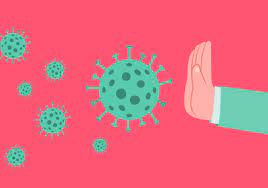
January is National Cervical Cancer Awareness Month
CERVICAL CANCER: THE BASICS
In 2023, it’s estimated that 14,000 women will be diagnosed with cervical cancer and an estimated 4000 will die from it. Hispanic women have the highest likelihood of developing cervical cancer and black women are the most likely to die from it. But here’s the good news – increasing vaccination rates and routine screening can reduce the risk of cervical cancer by 90%!


Almost all cervical cancer cases (99%) are linked to infection with high risk human papillomavirus (HPV), an extremely common virus transmitted through sexual contact. Although most infections with HPV resolve spontaneously and cause no symptoms, persistent infection can cause cervical cancer in women.
SYMPTOMS
Early-stage cervical cancer has no signs or symptoms which is why regular screening with pap smears and HPV testing is critical. Advanced cervical cancer may present with abnormal vaginal bleeding, abnormal vaginal discharge or pelvic pain.
TYPES OF CERVICAL CANCER
Squamous cell carcinoma:
Most cervical cancers (up to 90%) are squamous cell carcinomas. These cancers develop from cells in the ectocervix or outer portion of the cervix.
Adenocarcinoma:
Cervical adenocarcinomas develop in the glandular cells of the endocervix or inner portion of the cervix.
RISK FACTORS
- Humanpapilloma virus infection
- Many sexual partners
- Early sexual activity
- Other sexually transmitted infections, especially HIV
- A weakened immune system (ie, following organ transplant)
- Smoking
- In utero exposure to diethylstilbestrol (DES)

PREVENTION
Since HPV is the most common cause of cervical cancer, the #1 step to prevent cervical cancer is to protect yourself from this viral infection!
GARDASIL 9 EXPANDED FOR PATIENTS AGED 27-45 YEARS OLD
- HPV vaccination, also known as Gardasil 9, is now available up to age 45! Check out our post from a few years ago (link above)
- Routine pap smears
- Minimize sexual partners and initiate intercourse later in life
- Avoid tobacco use
- Maintain a healthy immune system
